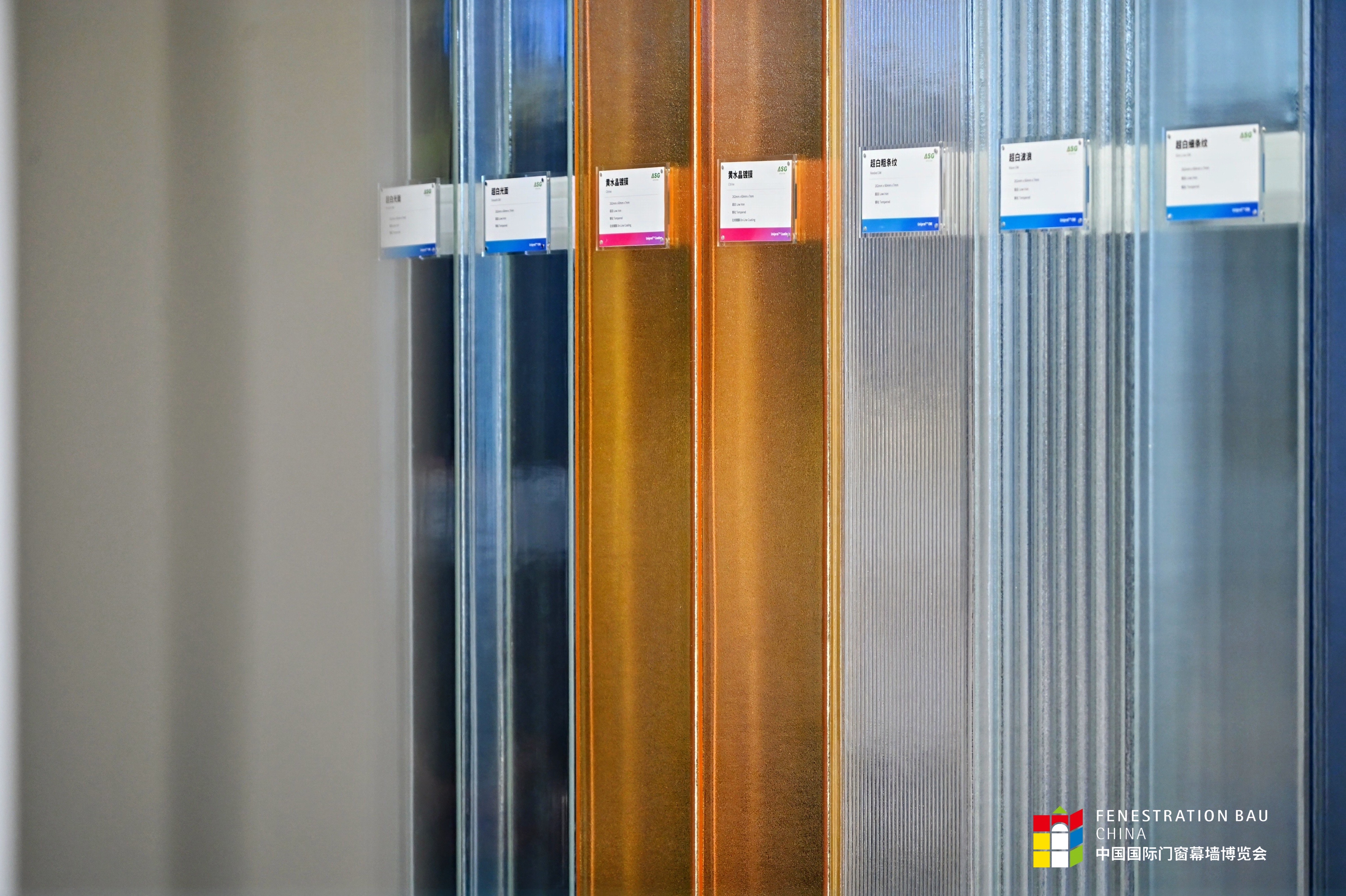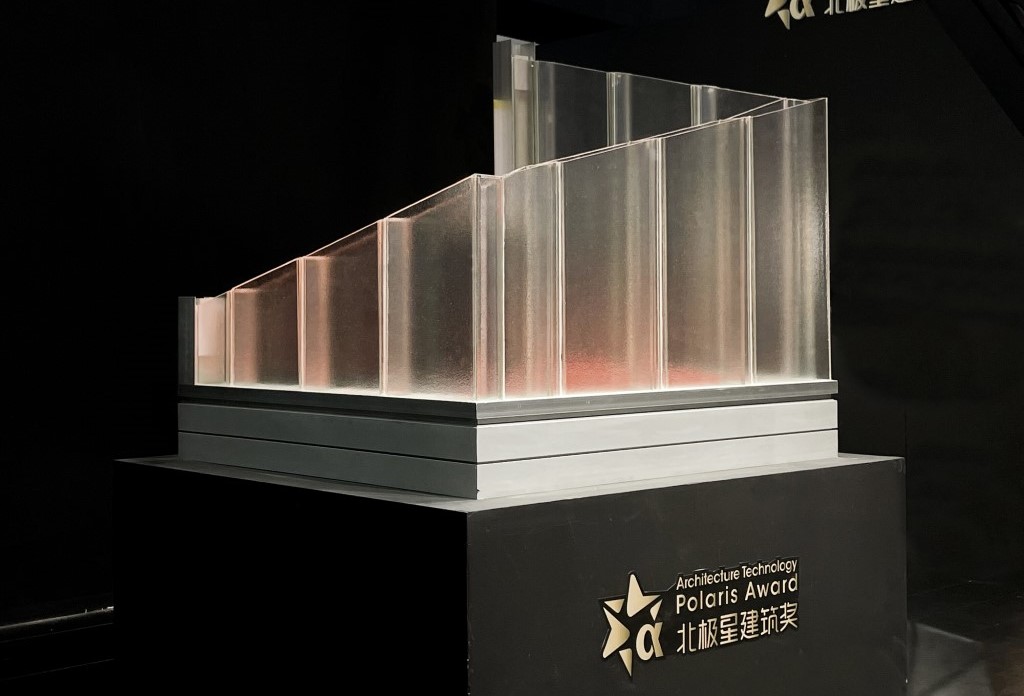An Architect's Guide to U Profiled Channel Glass (3)
2019-05-01
Texture
A range of texture can be specified and each manufacturer has different names for their textures. Standard is usually dimpled or orange peeled like surface (504), netted has a small net like grid (macro), ribbed is thin ribs (slim line), fluted has round ridges, clear (Klar or smooth) - this is because it's cast and not a float glass product it won't appear optically clear. There is sandblasted, which is a frosted look for higher light diffusion. The degree of opacity can be controlled with sandblasting and acid-etched a less expensive option than sandblasted but similar in appearance.




Sustainability
The manufacturing of standard glass is by nature extremely energy intensive but it takes just half of the energy to produce glass from cullet, which is recycled glass as it does to produce it from raw materials. Channel glass boasts 60% recycled content 20% from factory waste and 40% from post-consumer waste. Channel glass can contribute lead points in several categories due to its high recycled content and daylighting contribution to interior spaces. It also bears mentioning that the factories for channel glass are located in Europe, which means shipping to countries outside of Europe will contribute to the products already substantial carbon footprint.

Solar heat gain
Beyond treating the glazing itself, solar gain should be planned for during design because overheating can be a problem on south and west facing walls in the northern hemisphere. Shading devices interior and exterior and an appropriate ventilation system are worth considering.

Hurricane glazing
For areas prone to hurricanes, Pilkington offers a hurricane rated channel glazing system.

Wind loading
Special considerations should be given to spans and related wind loads it's recommended that you rely on a good engineer to help you with your design.
Cost
Because of the wide range of options and configurations, cost can be hard to quantify. A good guideline is to assume a 20% premium over the cost of standard wall construction. A double glazed tempered exterior wall system ranges from 65 to 75 dollars per square foot for a material cost. A single glazed wall would be half the cost. Of course, this depends on the exact options selected. To add insulation, plan on in additional 14 to 20 dollars per square foot. While this certainly isn't the most affordable way to dress the exterior of your home, the upfront cost can be offset by other factors such as the added daylight, which can lower artificial lighting costs. Not to mention the intangible effects of natural light on daily life. It can also reduce the need for window coverings draperies and shades due to its naturally shaded surface, and glass exterior walls require virtually no maintenance.
Manufacturers
There's two primary distributors for channel glass in the United States. Bendheim wall system, which distributes Lambert's Linit channel glass and Technical Glass Products - TGP, which distributes Pilkington Profilit™. Each manufacturer has proprietary systems available for connecting the channel glass to the underlying structural, as well as an array of finishes colors and textures to choose from. The material itself, as I said, has been manufactured in Europe for more than 30 years. These manufacturers have specialized knowledge and experience to aid you in the best design practices for your particular situation. They do stock quantities of channel glass in the US, but special orders require a longer - usually twelve week or more lead time.


Advantages
Disadvantages
A range of texture can be specified and each manufacturer has different names for their textures. Standard is usually dimpled or orange peeled like surface (504), netted has a small net like grid (macro), ribbed is thin ribs (slim line), fluted has round ridges, clear (Klar or smooth) - this is because it's cast and not a float glass product it won't appear optically clear. There is sandblasted, which is a frosted look for higher light diffusion. The degree of opacity can be controlled with sandblasting and acid-etched a less expensive option than sandblasted but similar in appearance.




Sustainability
The manufacturing of standard glass is by nature extremely energy intensive but it takes just half of the energy to produce glass from cullet, which is recycled glass as it does to produce it from raw materials. Channel glass boasts 60% recycled content 20% from factory waste and 40% from post-consumer waste. Channel glass can contribute lead points in several categories due to its high recycled content and daylighting contribution to interior spaces. It also bears mentioning that the factories for channel glass are located in Europe, which means shipping to countries outside of Europe will contribute to the products already substantial carbon footprint.

Solar heat gain
Beyond treating the glazing itself, solar gain should be planned for during design because overheating can be a problem on south and west facing walls in the northern hemisphere. Shading devices interior and exterior and an appropriate ventilation system are worth considering.

Hurricane glazing
For areas prone to hurricanes, Pilkington offers a hurricane rated channel glazing system.
Wind loading
Special considerations should be given to spans and related wind loads it's recommended that you rely on a good engineer to help you with your design.
Cost
Because of the wide range of options and configurations, cost can be hard to quantify. A good guideline is to assume a 20% premium over the cost of standard wall construction. A double glazed tempered exterior wall system ranges from 65 to 75 dollars per square foot for a material cost. A single glazed wall would be half the cost. Of course, this depends on the exact options selected. To add insulation, plan on in additional 14 to 20 dollars per square foot. While this certainly isn't the most affordable way to dress the exterior of your home, the upfront cost can be offset by other factors such as the added daylight, which can lower artificial lighting costs. Not to mention the intangible effects of natural light on daily life. It can also reduce the need for window coverings draperies and shades due to its naturally shaded surface, and glass exterior walls require virtually no maintenance.
Manufacturers
There's two primary distributors for channel glass in the United States. Bendheim wall system, which distributes Lambert's Linit channel glass and Technical Glass Products - TGP, which distributes Pilkington Profilit™. Each manufacturer has proprietary systems available for connecting the channel glass to the underlying structural, as well as an array of finishes colors and textures to choose from. The material itself, as I said, has been manufactured in Europe for more than 30 years. These manufacturers have specialized knowledge and experience to aid you in the best design practices for your particular situation. They do stock quantities of channel glass in the US, but special orders require a longer - usually twelve week or more lead time.

Advantages
- natural light, it lowers artificial lighting loads
- privacy, it allows for light in private spaces
- structural, it's self-supporting uninterrupted spans without intermediate supports R value, with the right coatings and insulation much higher than standard glass
- near zero maintenance
Disadvantages
- Cost, it's 20% more than a standard wall
- its thermal performance, lower than a standard wall
- it has a substantial carbon footprint, it ships from Europe and it has high embodied energy costs
- heat management, you have to carefully regulate large glazed areas you








